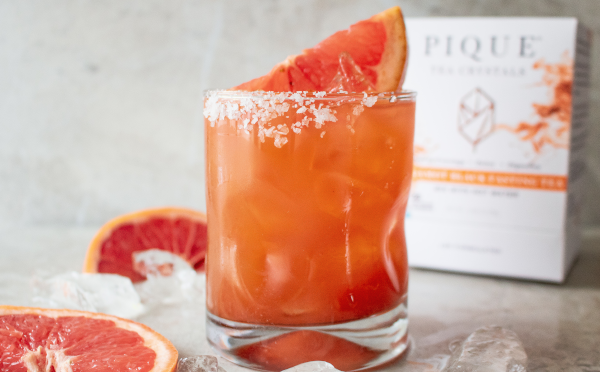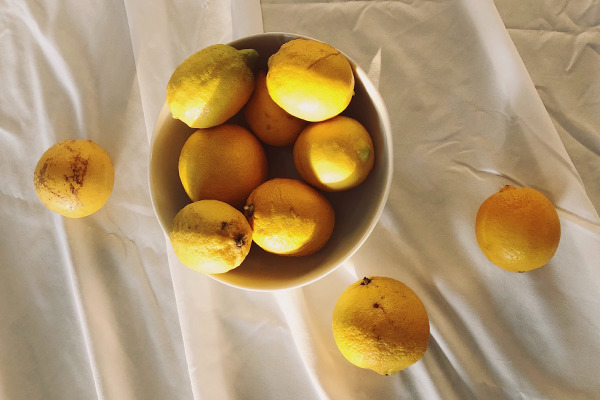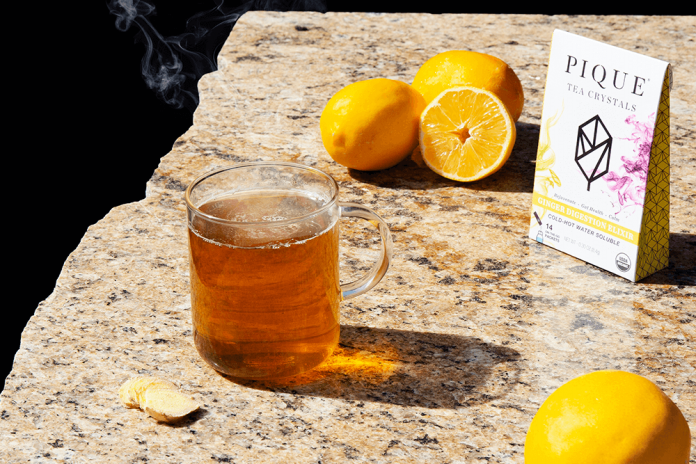Did you know that bitter foods may be better for your health?
Often described as a sharp or pungent flavor, the bitterness in foods like arugula, dark chocolate, and citrus fruits isn’t everyone’s cup of tea.
But a peek at the powerful health benefits of bitter foods may make you reconsider their place in your diet.
Turns out, they may support improved gut health and contribute to a superhero-like immune system, not to mention better overall well-being.
So before we share the inside scoop on the best ones to consume – and what to do if you really dislike them – let’s answer this question first:
What Makes Bitter Foods Better?
Bitter foods are better for your health because they play a crucial role in how well your digestive system functions.
As soon as you bite into them, you activate bitter taste receptors. These release hormones that produce bile, stomach acid, and enzymes to help break down your food during digestion.
Bitter foods then help stimulate your gastrointestinal muscles, which are responsible for moving food through your digestive tract. This helps pass food out of your system with ease.
On a keto diet? Research shows that bitter foods may help aid in the digestion of fatty meals – especially when consumed 20 to 30 minutes before eating. They support better fat digestion and may prevent a buildup of waste in your liver. (1)
Bitter foods also trigger the release of hormones that may help control your appetite and get your sugar cravings under control.
Researchers from a very small study discovered that bitter foods, as opposed to sweet flavors, can delay gastric emptying. So as your body digests your food slower, you may stay fuller for longer. (2)
But better digestion and support for your weight loss goals aren’t the only upsides to eating bitter foods.
Health Benefits of Bitter Foods according to Traditional Chinese Medicine
In Traditional Chinese Medicine (TCM), there are five distinct flavors – spicy, sweet, bitter, sour, and salty. You can learn more about them here.
According to the Tao of Nutrition, bitter foods are connected to the fire element and help guide the heart. This may be why they’re believed to help dry dampness and break up obstructions in your body. (3)
TCM says bitter foods provide a downward, draining action to encourage positive movement. This may help reduce edema or break up a cough that’s due to Chi stagnation, as the book mentions. (3)
Plus, the anti-inflammatory properties found in bitter foods may keep your body cool while also clearing out heat. There’s research to highlight the cooling effects of bitters when you feel too hot or have a dry tongue and flushed skin. (1)
That same body of research also shows that bitters may help decrease your heart rate when it’s too high and support circulation to your abdominal organs. Researchers even noticed a mood-boosting effect from the bitters. (1)
Traditional Ayurvedic medicine also highly favors bitter tastes.
Bitter Flavors from an Ayurvedic Perspective
Unlike fire in TCM, bitter flavors are connected to air and cooling elements in Ayurvedic practices.
Bitters are said to have a pungent effect on digestion. (4) And they’re also believed to support: (4)
- The cleansing of fat and toxins from your body
- Your tastebuds
- A healthy appetite
- Clearing out congestion
- Blood purification
- Draining excess moisture from the body
- Liver cleansing
- Better skin health (including relief from itching, swelling, and burns)
- Decreased fainting
- Improved muscle tone
- Intestinal gas and bloating relief
- Enhanced digestive secretions and digestive enzymes
Even though these perks are believed in traditional Ayurvedic cultures, there isn’t sufficient scientific research to support them just yet.
Ayurvedic medicine also cautions that eating too many bitter foods may lead to nausea, decreased kidney and lung function, dry mouth, constipation, excess coldness, and other unwanted side effects. (4)
So it’s crucial to strike the right balance and not go overboard here.
But it’s incredibly hard to overdo it with bitter foods because our bodies don’t naturally crave them like sweets.
Why Don’t We Crave Bitter Foods?
If bitter foods are so good for you, why don’t we crave them?
You can thank our modern-day food system for this evolutionary adaptation.
See, back when our ancestors foraged for foods, most of what they found was bitter.
Sweet foods like berries were much harder to come by.
So our bodies adapted to running on the plethora of bitter foods available. Our guts actually contain 25 bitter taste receptors – but only one – yes, one! – sweet food receptor.
Despite our bodies being more set up to handle bitter foods than sweet ones, today’s grocery stores encourage the opposite.
Produce and products have been genetically engineered and redesigned to be sweeter and less bitter.
So now our taste buds are more naturally inclined to reach for the sweet stuff instead of the bitter.
But this costly mistake means you’re probably missing out on all the essential and incredible health benefits we discussed.
The good news is there are plenty of deliciously bitter herbs, veggies, fruits, and superfoods you can add to your diet starting right now.
What are the Best Bitter Foods to Eat?
You’ll find a wide variety of healthy bitter foods to nosh, including: (1)(3)(4)
- Artichoke
- Arugula
- Apricot kernels
- Coffee
- Chicory root
- Citrus peels
- Cranberries
- Cumin
- Bitter melon
- Bitter orange
- Broccoli (and broccoli rabe)
- Brussels sprouts
- Burdock root
- Dark chocolate
- Dark leafy greens (such as kale, dandelion greens, collard greens, echinacea, valerian, and chamomile)
- Dill
- Eggplant
- Endive
- Fennel seeds
- Fenugreek
- Ginger
- Milk thistle
- Radicchio
- Rhubarb
- Saffron
- Sesame seeds and sesame oil
- Turmeric
Bonus: Many of these foods are also packed with fiber, vitamin C, and vitamins A, E, K, and folate.
Yet even still…
What Happens if You Don’t Like the Taste of Bitter Foods?
There’s no sugarcoating it: some people simply don’t like the taste of bitter foods.
So if you’re in this boat, will you forever miss out on these incredible health benefits?
Absolutely not.
But you may need to retrain your palate.
In our hyper-palatable world where sweet and salty foods reign supreme, it can be hard to connect with your ancestral desire to eat more bitter foods.
So to combat this, start weaving in more bitter foods that you already like. Then, try adding in new ones to slowly and gradually get your palate used to them.
You should have no trouble retraining your taste buds for the better.
You’re also likely to find that your cravings for sweet and salty foods will diminish the more often you do this.
And who knows? You may start looking forward to eating, or even crave, some of the bitter foods listed above.
So it’s time to take the first step:
How to Weave More Bitter Foods Into Your Diet
Bitter foods not already a staple in your diet?
It’s best not to overload your system by including all of them at once.
Instead, begin by adding a little arugula to your standard salad lettuce, for example, or consider tossing in a handful of kale or dandelion to your smoothie.
You can also sprinkle spices like dill, turmeric, saffron, or ginger into your meals to add extra flavor and a dose of bitters.
We love taking radicchio and spreading a little hummus on it for a quick snack.
Super short on time? Get your bitters in with a quick tincture or tea before your meals.
This ensures that you soak up all the fantastic health benefits, whether you’re fasting or running out the door.
Final Thoughts on Bitter Foods (Plus a Bonus Bitter Recipe)
If you’ve made it this far, you now know why bitter foods deserve a place in your healthy diet.
From cooling off your body to helping improve digestion, there are enough health benefits to encourage adding this key ingredient to all your meals.
But even too much of a good thing can offset the healthy homeostasis of your body. So it’s important to strike the right balance between bitter foods and the four other flavors.
For a fun and easy way to weave in more bitter foods, try this delicious Grapefruit Bergamot Margarita recipe today!

Ingredients
- 1 sachet Pique Bergamot Black Fasting Tea
- 1 ounce filtered hot water
- 3 oz. grapefruit juice
- 1 1/2 oz. gold tequila
- 2 tbsp fresh lime juice
- 2 tsp agave nectar
- 1 ½ cups ice
- 1 tbsp coarse sea salt
- 1 wedge of lime
- 1 slice of grapefruit
Instructions
- Dissolve tea in hot water in a small cup. Transfer to refrigerator for 15 minutes to cool. Pour sea salt onto a small plate. Rub a wedge of lime onto one side of a cocktail glass and dip into sea salt. Add 1 cup of ice to a cocktail glass. Set aside.
- Add 1/2 cup of ice to a pint glass. Pour in chilled tea, tequila, lime juice, grapefruit juice, and agave nectar. Stir for 5 seconds to combine. Strain into cocktail glass over fresh ice. Garnish with a slice of grapefruit.






